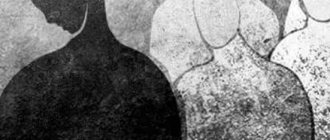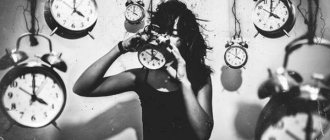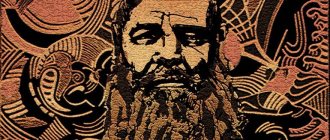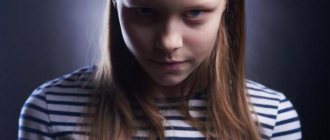.
It has always been believed that the fear of balloons is a childhood problem. Research has revealed that many adults are prone to this type of phobia. The problem may seem comical, but looking at it from a psychological point of view, it can be noted that the fear of balls hides serious mental problems.
Globophobia - fear of balloons
Brief information about the phobia
A phobia never appears just like that; it is preceded by a strong emotional shock, which subsequently leads to mental disorder. What is the fear of balloons called? This is globophobia.
Balloons should be associated with the holiday and evoke positive emotions. The problem becomes relevant if, in childhood, a person received psychological trauma associated with loud banging. If a child heard the sound of popping balloons and was afraid of it, then he can retain his anxiety for a long time. In adulthood, sudden bangs, explosions of firecrackers and other similar sounds can cause a feeling of fear.
Causes of globophobia
A phobia can have various manifestations.
- A person may experience a feeling of fear while inflating a balloon. The problem may be associated with a negative experience when the process of filling the balloon with air was not successful: it burst from excess air and hit the face painfully.
- The phobia of flying away with a bunch of balloons also comes from childhood. The child may be frightened by the impressive size of the ligament.
- A helium-filled balloon flew away and never returned. An incident that impresses a small child so much can develop into a feeling of fear in adulthood.
Flying away balloons can scare a child and provoke globophobia
Reasons for appearance
The fear of a small child at the sight of a bunch of balloons, especially if one of them “decides” to burst, making a sharp and unexpected sound for the baby, may well provoke the development of the disorder.
Also, the baby could get upset if his ball simply flew into the sky or got tangled in branches or wires.
Such a situation can evoke associations with the loss of a loved one, and what child doesn’t cry after losing his toy?
Only in those cases when he did it on purpose is he able to rejoice, watching how his ball gradually rises, how the wind “throws” it from side to side.
Also, fear of balls may appear after watching horror films. For example, in the film “It,” a maniac clown killed children and always appeared with a red ball that lured the kids.
If one of the parents has been diagnosed with any kind of mental disorder, then there is a high risk of also “acquiring” something similar at the time of experiencing severe stress and psychological trauma.
In this case, we are talking about heredity and it is extremely important to monitor your condition so as not to miss the alarm bells of a more complex disease.
Symptoms
It is very easy to recognize a person who suffers from a fear of balls. The symptoms of such disorders are pronounced. People are terrified of balls and everything connected with them. People with such psychological disorders may experience the following problems with the body when they see the object of fear:
- tachycardia;
- heavy sweating;
- chills;
- stiffness in movements;
- dizziness or fainting.
There is also an irresistible desire to hide away from the object of your fear. People try to suppress such desires, but there are times when they behave inappropriately:
- close in on themselves;
- sit on the floor and begin to sway from side to side;
- hiding;
- Cover your ears with your hands.
Such symptoms require urgent consultation with a specialist.
Symptoms
For a person with glophobia, the same picture pops up in the brain. This usually involves a balloon exploding in the face.
When the thought, sight or sound of a feared object occurs, symptoms of anxiety appear:
- Dyspnea;
- Palpitations, chest pain;
- Children cry, run away or hide;
- The child comes up with excuses to prevent encountering danger. Refuses to attend parties or fairs.
- Trembling, sweating and other physical symptoms;
- Gastrointestinal disorders, nausea.
Diagnosis of the disorder
The disease is paroxysmal in nature, many do not attach importance to it. The only exceptions are cases with panic attacks, which haunt a person with every contact with a phobia. Diagnosis of such a disorder is necessary to ensure that globophobia does not lead to other mental disorders.
A fear of balloons is easy to diagnose in childhood and easy to eradicate. If treatment is not carried out at an early age, then over the years the problem will lead to neuroses and stress.
Diagnosis of a mental disorder
Due to the fact that globophobia is periodic, many do not attach much importance to their fears. However, a mental disorder of this type requires mandatory treatment and, therefore, timely diagnosis. It is especially important to identify pathology in childhood and adolescence, since with age the disorder can take on a more serious form, especially if a person has a hereditary predisposition to nervous diseases.
In order to promptly identify a phobia, careful observation of the patient is necessary. For children, parents become the primary controllers, while adults may require specialist clinical care.
If during the observation process it was revealed that globophobia is accompanied by additional mental disorders, then to clarify the diagnosis it is necessary to do a computed tomography scan. In addition, in the process of studying personality, doctors interview the patient about hereditary predisposition.
Solution
The sooner you start fighting the disorder, the easier it is to achieve the desired result. If a child is afraid of a bursting balloon, then you should gradually instill in him trust and love for the toy. You can suggest making balls from plasticine or drawing them on paper.
Try to avoid such a problem: if a balloon bursts next to your child, be sincerely surprised and laugh, then the child will perceive the incident as a game. Children copy their parents' behavior, so don't focus on fear.
It is more difficult to cure an adult from a phobia. The main emphasis to solve the problem is on contact with the irritant. The patient himself must recognize the pettiness of his fear and let it go.
The treatment method is that a person must let go of his fear. To do this, take a bunch of balloons and release them into the sky, symbolizing parting with the phobia.
You can be brave and pop the balloon with a needle. Don't close your eyes, seeing the mechanism in action will make it easier for you to perceive what is happening.
To treat a phobia, an adult needs contact with balls
Existing methods
After consulting a psychotherapist or neurologist, you may be prescribed medication. Sedatives in combination with sports and meditation have a positive effect. The cognitive method of therapy allows the patient to independently solve the problem with globophobia. The treatment is carried out in sessions: the person is mentally sent to a situation where he experienced an incident that led to fear.
Another method of therapy is to put the patient into a hypnotic state. This technique is considered the most productive and allows you to identify and eradicate the problem in just a few sessions.
Treatment
Globophobia is a real and common phobia that affects many people. The first thing to do is talk to a psychotherapist. Individual counseling can help rationalize fear. There are effective treatments for phobias:
- Behavioral therapy and exposure
- Hypnotherapy
- Consulting
- Professional self-help books
- NLP
- Professional advice
- Medicines
Although the cause of fear is not fully understood, the unpleasant symptoms can be successfully relieved. Most people understand that balloons are not dangerous, but they feel powerless in the face of fear.
1. Xanthophobia – fear of the color yellow
People with xanthophobia may fear any yellow objects, including the sun, daffodils, and yellow paint. In its most aggressive form, xanthophobia can manifest itself as a fear of even the word “yellow.”
2. Turophobia - fear of cheese
People suffering from turophobia tend to associate cheese with some kind of traumatic memory. And it doesn’t matter what kind of cheese it is - mozzarella or cheddar - turophobes often run away headlong at the sight of even the smallest piece of cheese. Some are afraid of a certain type of cheese, others are afraid of cheese in general.
3. Somniphobia – fear of falling asleep
Somniphobia is expressed in an irrational and extremely strong fear of falling asleep. Somniphobes are afraid to fall asleep because they associate sleep with death. This phobia may also arise from the fear of losing control of oneself while sleeping or from frequent nightmares. Somniphobes may also be afraid of wasting a lot of time while sleeping.
4. Coulrophobia – fear of clowns
Nowadays, courophobia is a fairly common phenomenon. According to many studies, it mainly affects children. The image of the “scary clown” often appears in popular culture - think, for example, of the Joker in comics and films about Batman. Even some famous people suffer from coulrophobia, including Johnny Depp and Daniel Radcliffe. Here's what Depp says about his fear of clowns: "Because of their painted faces, you can't tell what's on their mind - whether they're happy or if they're going to bite your face off."
5. Hylophobia - fear of trees
Hylophobia is an irrational fear of trees or forests. It often appears after a child watches a movie or hears a fairy tale in which the forest is scary and the trees are evil. Many chilophobes never manage to outgrow their fear with age, and any walk in the park causes them severe anxiety. Some of them experience unbearable anxiety just thinking about the forest.
6. Omphalophobia – fear of belly buttons
Omphalophobia is the fear of belly buttons. People suffering from this phobia are afraid of someone touching their belly button and are afraid of touching other people's belly buttons. This fear is often due to the fact that belly buttons are typically associated with the umbilical cord and the womb. Sometimes omphalophobes are afraid to look or even think about belly buttons.
7. Nomophobia – fear of being left without mobile communications
This fear of being left without mobile communications received its name five years ago, when scientists discovered this phobia. More than half of the UK population suffers from this phobia, according to new research. People are afraid to go into an area where there is no signal, they are afraid that their phone battery will run out - sometimes they become anxious if the phone is out of sight.
8. Ombrophobia – fear of rain
Ombrophobes are afraid of rain, which can lead to a serious panic attack. It is believed that a fear of rain can develop for several reasons, including because children are often told not to go outside in the rain, adding that they may get sick. Additionally, rain is often associated with depression.
9. Papaphobia – fear of the Pope
Fear of the Pope or the papal throne is a fairly rare occurrence. It is closely related to hierophobia (fear of clergy or religious objects). It is also associated with hagiophobia - an excessive and irrational fear or dislike of saints or sacred relics. This fear usually stems from dad-related trauma.
10. Uranophobia – fear of the sky
People suffering from uranophobia fear the sky and the afterlife. Such fear often arises among believers who are afraid of God's judgment.
11. Pogonophobia – fear of beards
The term pogonophobia has been used since the 1850s and refers to the fear of beards. Recently presenter Jeremy Paxman accused the BBC of pogonophobia after he was criticized for appearing on Newsnight with a beard.
12. Trypophobia - fear of holes
People with trypophobia are afraid of cluster holes, that is, objects with many small holes. So far, this type of fear has not been included in the official list of phobias, although, according to some reports, thousands of people suffer from it. Research has shown that people with trypophobia associate holes with danger. Trypophobes are afraid of objects such as honeycombs, sponges, or plants that have many small holes. Symptoms of trypophobia can include nausea, itching and even panic attacks.
13. Triskaidekaphobia – fear of the number 13
Many people believe in omens associated with the number 13, but not all of them suffer from triskaidekaphobia. This fear is closely related to the fear of Friday the 13th. People suffering from this phobia studiously avoid things and activities associated with the number 13.
InoSMI materials contain assessments exclusively of foreign media and do not reflect the position of the InoSMI editorial staff.










